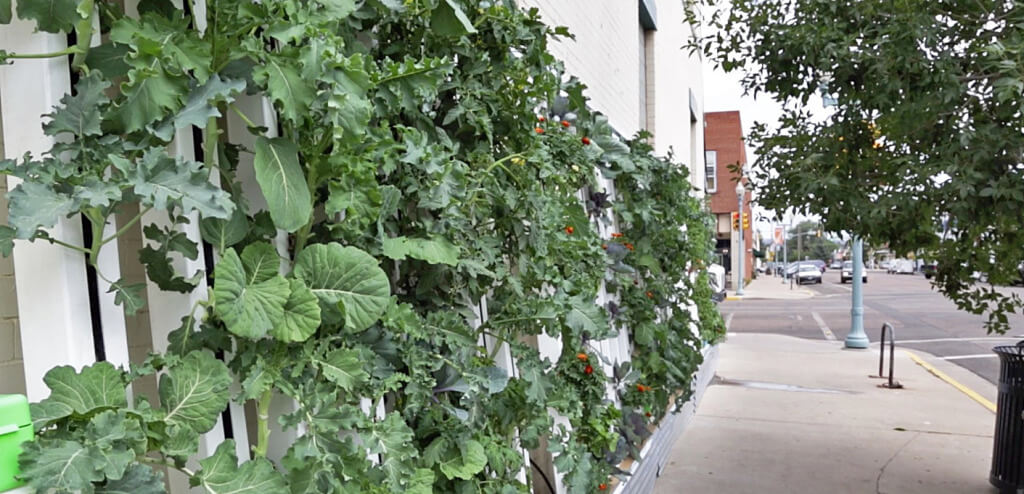This discussion of living walls was written primarily by Lois Downing and reformatted for this post.
Are green walls just a fad?
Green walls are a growing attraction to farmers, businesses, cities, restaurants, grocery stores, and more. Since we entered the green wall scene in 2012, the industry has grown exponentially. While the technology holds great potential and excitement for the future population of our urban areas, there are also challenges to address if we are to take hold of these benefits.
What is a green wall, anyway?
You might have heard of them referred to as a green facade, living wall, bio-wall, vertical garden, or vertical vegetation. At Bright Agrotech, we call ours “Farm Walls.” All green walls are vertical surfaces covered in vegetation; some are grown on the wall itself, while some (mostly those called facades) are rooted in the ground then trellised up the side of the building.
The idea of growing on the side of a wall could have started way back around 600 BCE with the hanging gardens of Babylon, but the green walls created today don’t share much with their ancient predecessor. Not only have the applications of green walls diversified from the original (mainly aesthetic) purpose, but installation methods have exploded in a variety of creative processes.
Here are our observations on the benefits and challenges that green walls present to society and the world.
The Many Benefits of Living, i.e. – Farm Walls
Indoor and outdoor Farm Walls offer a number of incredible benefits.
Farm Walls as living art
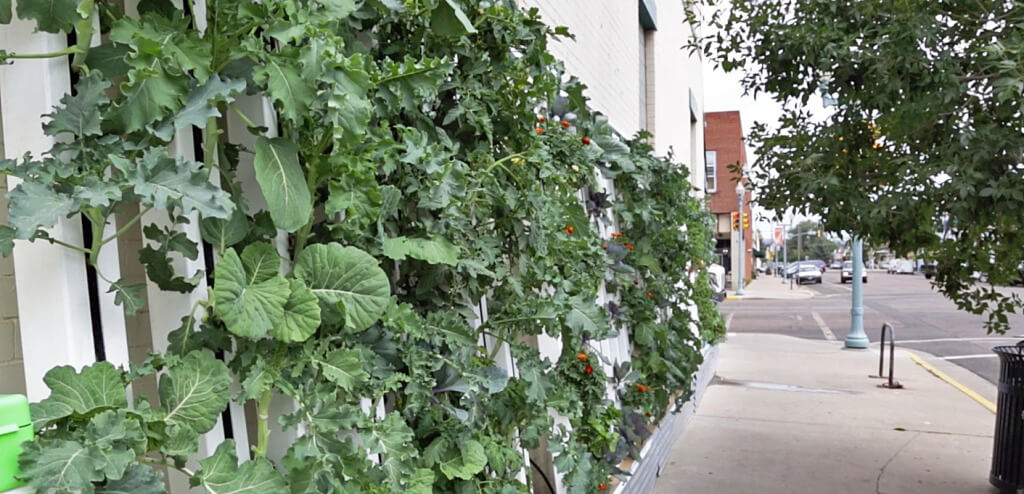
Farm Walls are works of art. They contribute in many less immediately obvious ways, but the visual effects are truly stunning.
There are few things as aesthetically pleasing as plants, and farm walls give us a way to transform boring, plain walls of concrete and dull paint into gardens.
This is one benefit that is nearly impossible to quantify, which may be an indication of its significance.
Art improves the human experience. Farm walls look amazing and they have innumerable functional advantages.
Farm Walls reduce building maintenance
The elements, like sunlight, rain, and temperature extremes that will eventually damage buildings and degrade surface treatments are beneficial or inconsequential to Farm Walls.
Farm Walls are capable of protecting structures and external finishes from the elements, which means those structures wont deteriorate as readily. This translates to fewer time-consuming and costly maintenance projects overall.
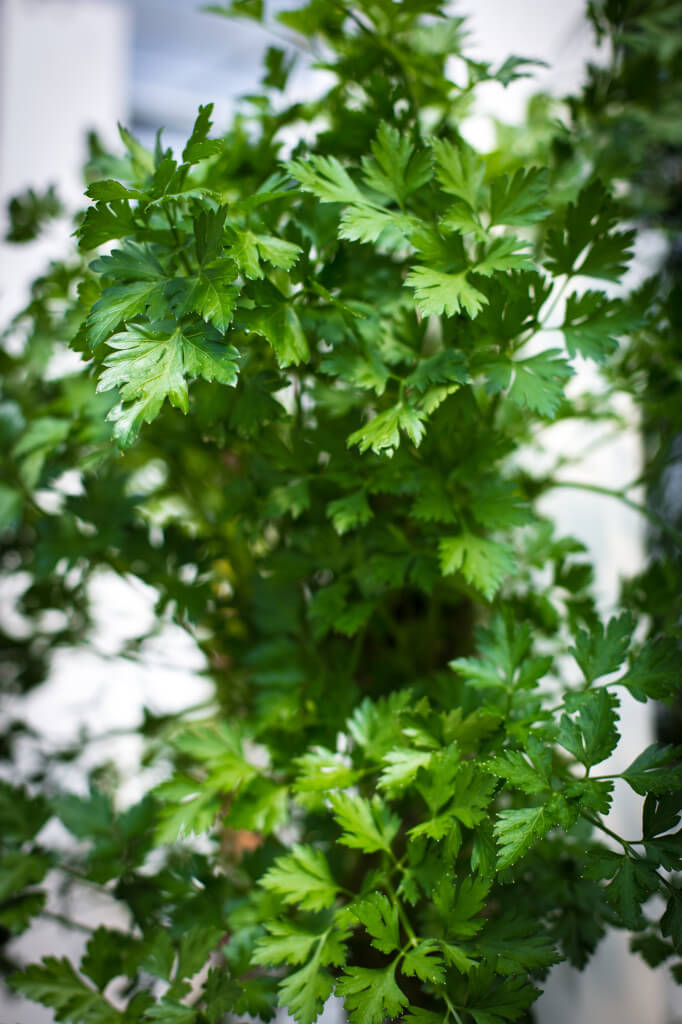 Most plants filter CO2 from the air, often along with other toxins.
Most plants filter CO2 from the air, often along with other toxins.
Farm Walls bring fresh air
Every time I leave the city Im amazed at how different the air feels; when I return, I feel like Im suffocating. Since we adapt so rapidly to our surroundings, most of us hardly notice the poor air quality around us.
On top of this, many buildings dont circulate air properly, not to mention that the ways we cook, clean and heat our homes can often introduce a number of pollutants and VOCs into the air we breathe.
Farm Walls act as filters; they remove particulates (dust and pollen) and toxins (CO2 and formaldehyde) from the air and produce oxygen.
If an outdoor farm wall is integrated properly during the process of designing and building a structure, it will also function effectively as a bio-filter for the air inside.
Farm Walls increase energy efficiency
Though the effects of a living wall on heating and cooling costs will vary with the location, climate and the type of installation, farm walls can do a lot to improve energy efficiency.
The wall acts like an additional layer of insulation, trapping air and serving as a buffer against winds.
Transpiration is the evaporative cooling system that plants use to control temperature (among other things) and it works to cool the surrounding air as well as the plant itself. With a single plant, the effects of transpiration are not noticeable, but indoor farm walls with thousands of plants can help keep things cool inside.
 Altitude’s Chophouse and Brewery uses local, fresh, and healthy greens from their green wall just outside the dining area. What does that say about them?
Altitude’s Chophouse and Brewery uses local, fresh, and healthy greens from their green wall just outside the dining area. What does that say about them?
Other benefits of living walls:
- reduce storm water runoff
- increase property values
- act as a bold statement about your priorities or your companys (its kind of a built in marketing technique, which is convenient to say the least)
- improve productivity (the research supporting this claim applies to indoor green wall installations)
- reduce noise, and
- help buildings/builders/owners to earn LEED credits and benefit from the associated government incentives
Endless potential
The applications for farm walls are almost limitless and witnessing the progress from concept to reality is exciting and inspiring. If youd like to read more and see some amazing photos, check out the Farm Wall page.
As you enjoy the pictures and read about the various projects, you might also develop a prejudice against unused vertical spaces like the walls of your garage and feel compelled to start a project of your own.
Traditional Challenges of Green Walls
1) Green walls are expensive
 At an average of $100-150 per square foot, plus a maintenance fee of between 8-10 percent of the cost of installation, not to mention the cost of water and electricity required to run irrigation systems and provide supplemental lighting, people begin to think that maybe steel and concrete dont look so bad after all.
At an average of $100-150 per square foot, plus a maintenance fee of between 8-10 percent of the cost of installation, not to mention the cost of water and electricity required to run irrigation systems and provide supplemental lighting, people begin to think that maybe steel and concrete dont look so bad after all.
Solutions:
For small businesses and individuals, the figures for installation and maintenance seem to put green walls completely out of reach.
The demand for smaller scale green wall installations is growing and businesses are working to meet that need. The technology is improving and as the systems are streamlined, we will probably see more economically feasible options for business owners and hobbyists.
While critics tend to object primarily to the high cost of g green walls, I have to wonder if anyone has asked how high the cost of not incorporating greenery into our cities would be.
Our solution:
The ZipGrow Farm Wall costs less than $30 per square foot and are stupid easy to set up. Recirculating water means lower water needs, and a single small pump means low electricity requirements.
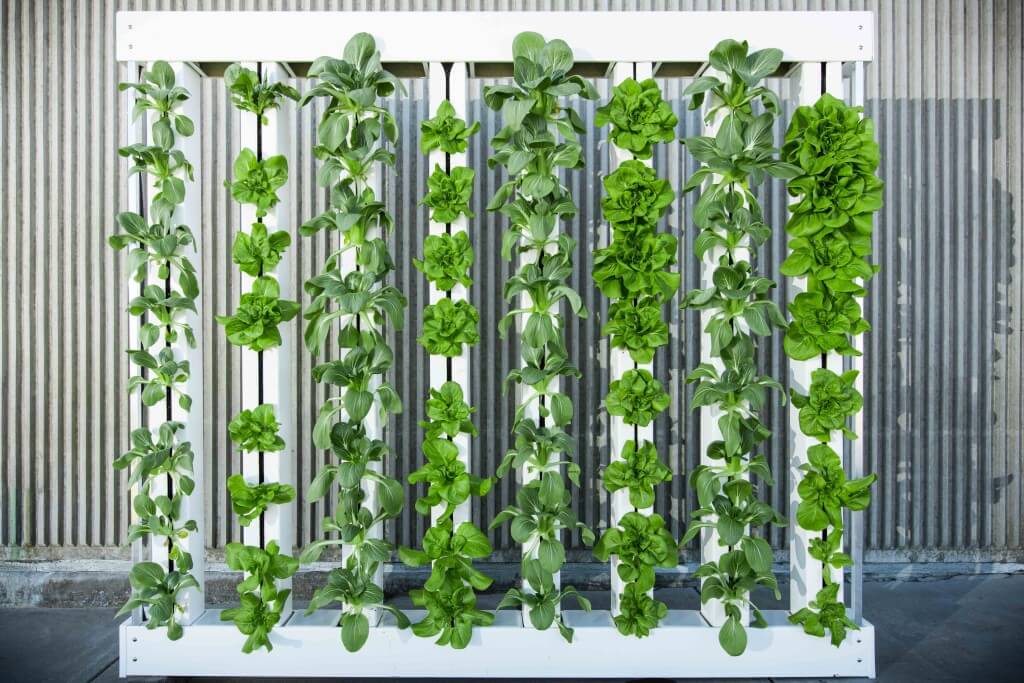
2) Installing and supporting a green wall requires an architecture degree
Green walls built with soil cells can weigh between 16 and 20 lbs. per square foot after they are planted. Most of us wouldnt be comfortable calculating loads and factoring in support for additional weight from rain, snow and the stresses of high winds.
For large installations, it is true that an understanding of architecture is a prerequisite.
Smaller situations only require careful planning and a little common sense to choose the best option for a given location.
Solutions:
There are many approaches to reducing weight. Light weight recycled plastics and media with a high percentage of air space decrease total weight considerably.
Many of Patrick Blancs walls have a very narrow profile. In some cases, the substrate supporting the plants has a depth of only two inches and, when planted, the walls weigh roughly 6 lbs. per square foot. This does add constraints to the crops, however.
Innovators in the field are using everything from felt to foam to keep weight to a minimum and increase the installation options for consumers.
Our solution:
Make something light weight. This obvious thing to do is remove soil and heavy materials.
So we did. The ZipGrow Farm Wall is lightweight and can be mounted on almost any sturdy vertical surface, such as a fence, the wall of a home, or in an office building. We’ve even mounted them to carports!
3) Green walls need too much maintenance

Those who condemn the incorporation of green walls as an overblown new fashion often point out the time and trouble of maintenance. They cite the difficulty of isolating disease and pest problems, the loss of aesthetic appeal when plants die, and the intensity of labor just to get access to the walls to do maintenance checks and replace plants as needed.
You might also read about the build up of salts that results from evaporation producing a toxic environment for plants.
Solutions:
Modular systems answer many of the difficulties of maintenance. Walls built with removable panels allow for the quick isolation of any area that may be in need of extra attention because of pests or disease.
Moving panels also answer issues of plant replacement, making it a much simpler task to adjust, improve or repair the surface design of a Farm Wall.
As long as the wall receives proper yearly maintenance, salination can be kept under control.
Accessing farm walls that have been installed after the fact is a challenge, but as more and more architects incorporate Farm Walls into their designs we are seeing buildings with incredible innovations for behind the scenes access to multi-story farm walls.
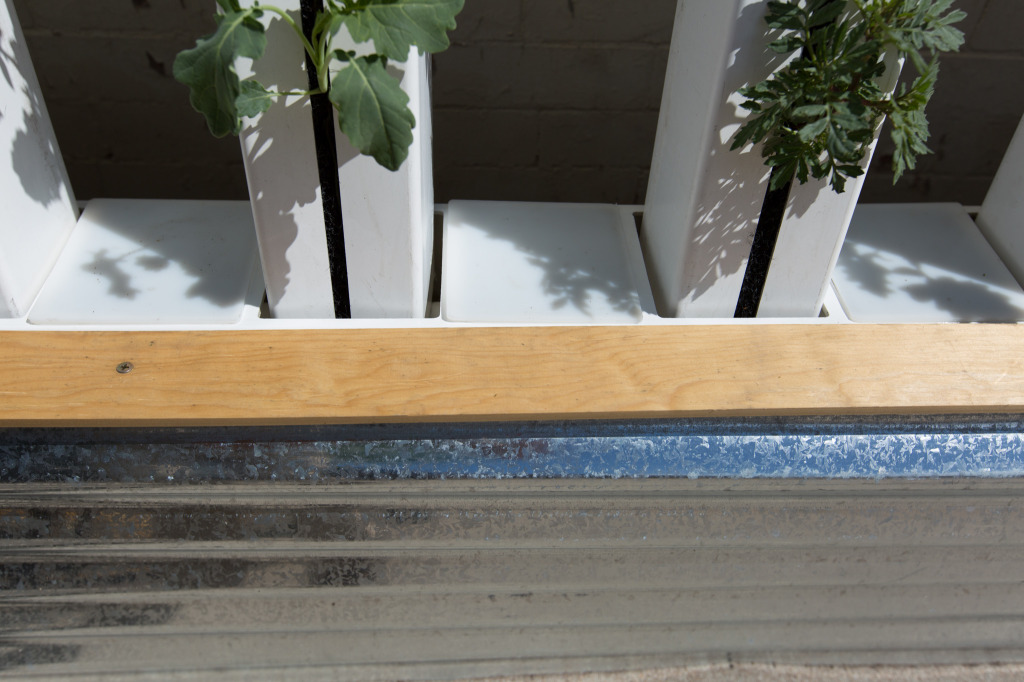 Why make maintenance difficult? ZipGrow Towers rest in the irrigation gutter and are easy to lift out and carry.
Why make maintenance difficult? ZipGrow Towers rest in the irrigation gutter and are easy to lift out and carry.
Our solution:
Design all of the above ideas into one product. We created a Farm Wall that is modular, easy to move, and which has add-ons that will add water for you. Could it get any easier?
In conclusion
The great news is that all of these challenges have been faced and answered, and the industry seems to attract people who are dedicated, creative and bent on making a positive contribution. We have a great deal to look forward to as technology and innovative design make the benefits of Farm Walls increasingly accessible.
We hope this information provides a realistic discussion of the excitement and innovation surrounding Farm Walls.

